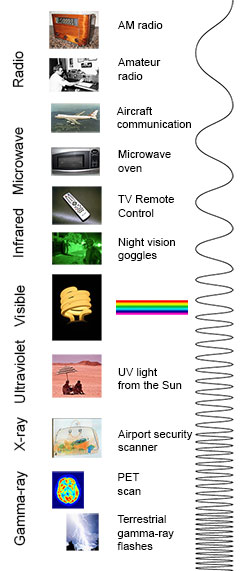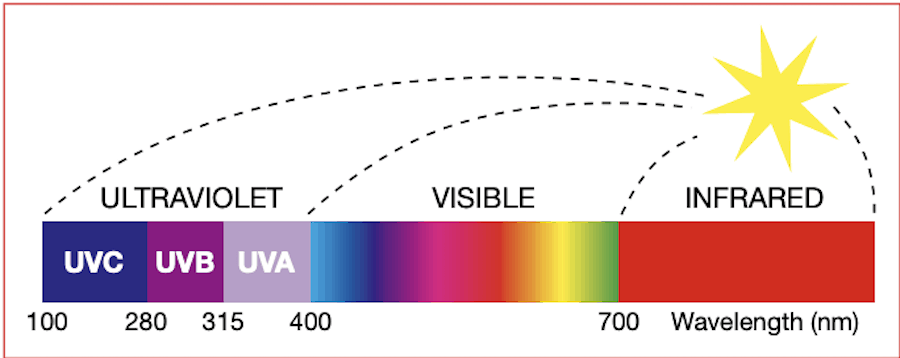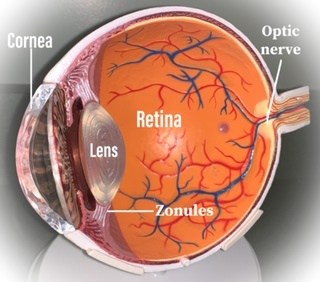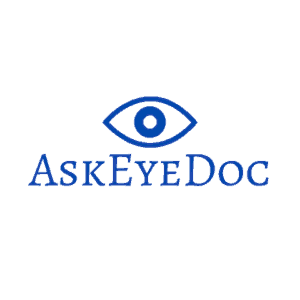We’re all aware that sunscreen shields our skin from the sun’s harmful rays, but did you know that UV exposure and visible blue light can also wreak havoc on your eyes?
Most of us are pretty familiar with the idea that sunscreen can help protect our skin from the harmful rays of the sun, but did you know that UV exposure and visible blue light can also damage your eye.
Unmasking UV Damage: What Lies Beneath
UV damage to the eyes can trigger a cascade of issues, including cataracts, pinguecula, macular degeneration, and even eyelid or intraocular cancers. It’s not just a lack of sleep that causes red eyes; chronic redness may signal a deeper problem that warrants a visit to your eye doctor.
- Cataract formation (click here to learn more about cataracts)
- Pinguecula or Pterygium (also known as “surfers eye” or Carnosidad in Spanish). For more information on these conditions click here.
- Macular Degeneration (to learn more click here).
- Cancer to the eyelids and inside the eyes
- Photokeratitis or solar keratitis (sunburn of the eyes)
(Continue reading to learn more about these conditions)
UV exposure usually doesn’t cause immediate damage to our eyes, its long-term exposure throughout our lives that we need to be worried about. Wearing sunglasses at a young age not only sets our children up for a life-long habit but can protect them from developing a vision-threatening eye disease later in life.
Since UVA and UVB are the most damaging, it is important to choose sunglasses with 99-100% UVA and UVB protection.
Guarding Your Vision with Sunglasses
Sunglasses aren’t just a fashion accessory; they’re your eyes’ best defenders. Not all sunglasses are created equal, so opt for quality lenses with 99-100% UVA and UVB protection. A snug fit is crucial, but if sunlight sneaks in, a hat can provide extra protection.
Tint and UV protection are not the same. Tinted lenses help to protect your eyes from the strain of the bright light but do not have added UV protection. In order for the lens to have the most UV protection, a chemical coating will be added to the lenses.
Just like sunscreen that comes in varying SPF protection, sunglasses do the same. For the most protection, make sure your sunglasses block 99-100% of UVA and UVB. However, even while wearing sunglasses we can still experience the effects of UV due to the rays coming in through the top, sides or even the bottom of the frame via reflected light. If your sunglasses do not fit snug you may want to consider wearing a hat to get added protection.
In the Journal of Exposure Science and Environmental Epidemiology, different lens colors were tested to determine if the color made a difference in UV transmission. The findings demonstrated that the lens color made no difference when it comes to UV penetration. This is again because the tint is not what determines UV protection.
Decoding the Polarized Puzzle
Polarized sunglasses are like superheroes against glare, especially on reflective surfaces like water or snow. While they reduce eye strain and improve visual clarity, some folks find them challenging around LCD screens. The decision to go polarized depends on your unique needs.
Polarized sunglasses help to reduce the glare off of reflective surfaces like water or snow. This can be particularly beneficial for fisherman to see below the surface of the water. According to Johnson&Johnson, “snow reflects 80 to 94% of UVB rays compared to water reflecting 5 to 8%”. Using polarized googles for snowsports can be very beneficial, not only to protect the health of your eyes, but also to reduce glare and improve visual clarity.

Polarized lenses can also reduce eye strain and help with light sensitivity. (Transition lenses created the following quiz: Are you light sensitive?)
Some people dislike polarized lenses due to difficulty seeing LCD screens. In some cars, this can make it difficult to see the dashboard gauges. I do not recommend polarized sunglasses for pilots due to this disadvantage.
Overall, the decision to choose polarized depends on your individual needs.
Kids and UV: Shielding Young Eyes

Kids are not exempt from UV risks. Although their ocular penetration is higher, encouraging them to wear sunglasses establishes a lifelong habit that safeguards against potential eye conditions.
Kids are at risk for the damaging effects of UV. According to the Journal of Exposure Science and Environmental Epidemiology, the percentage of UV ocular penetration decreases with age. Even though UV penetration for children is only 2-5% and that of adults is only about 1-2%, throughout a lifetime that can add up. Encouraging children to wear sunglasses at a young age can get them into a good lifelong habit that can help prevent ocular conditions later in life.
Read on to learn more about the science behind UV Radiation…
Journey into the Electromagnetic Spectrum
Avoiding a deep dive into physics, let’s understand the basics of the electromagnetic spectrum. The sun emits UV radiation in three categories: UVA, UVB, and UVC. Each poses unique risks to our eyes, ranging from macular damage to the dreaded cataracts.

This photo from NASA shows the various wavelengths in the Electromagnetic spectrum. Many of which we are familiar with.
For the purpose of the article, I am just concerned with UV radiation. The photo shows us how the wavelengths vary from low energy, long wavelengths at the top to high energy low wavelengths at the bottom.
Charting the Course of UV Radiation
In the vast spectrum, UVC radiation is mostly blocked by the atmosphere, but UVA and UVB can still penetrate. The cornea and crystalline lens act as natural barriers, absorbing these harmful rays. However, prolonged exposure can lead to conditions like solar keratitis and pterygium.
I created the chart below to demonstrate the three UV classifications and the potential damage that can occur to our eyes.
UV Radiation (UVR) classifications:
| UV Classification | Wavelength | Percentage of UVR | Risk to the eye |
| UVA | 400-320nm | >98% | Macular damage |
| UVB | 320-280nm | <2% | Pterygium, Cataract, cancer, photokeratitis |
| UVC | 280-100nm | Insignificant (blocked by the atmosphere) | Minimal effect due to ozone absorption |

Most of the suns radiation is removed by atmospheric scatter and absorption. In the chart above you can see that the UVC radiation, which is the shortest wavelength, is mostly absorbed by the atmosphere. However, the radiation that does pass through the atmosphere can cause damage to our skin and eyes.

The front structures of our eyes, the cornea and crystalline lens (click this link to learn about basic ocular anatomy) are good at preventing the short-wavelengths of UV (UVB and UVC) from entering the eye, preventing retinal damage.
The cornea absorbs much of the short-wavelength UVC and UVB radiation, which put it at risk for developing solar keratitis (corneal inflammation) and pterygium (to learn more about pterygium click here).
The crystalline lens absorbs most of the UVA and UVB radiation, protecting the retina. However, this UV absorption will eventually cause cataract formation (to learn more about cataract formation click this link).
The longer wavelengths of radiation contain less energy, which can penetrate the ocular surfaces more easily. Years of UV exposure can potentially cause retinal damage in the form of Macular Degeneration (UV is not the only risk factor for Macular Degeneration to learn more about Macular Degeneration click this link).
The UV Index: Your Sunscreen for Eyes
Developed in 1994, the UV index guides us on the intensity of UV exposure. Ranging from low to extreme, it helps us gauge when the sun is at its strongest. Check your local UV index and encourage your personal assistant or Alexa to keep you informed.
The UV index changed in May 2004, at which point it went from a 1 (low) to 10 (high) scale to a 1 to 11 scale.
UV index and UV exposure
| UV Index | UV exposure (low to high) |
| 1-2 | Low |
| 3-5 | Moderate |
| 6-7 | High |
| 8-10 | Very High |
| 11+ | Extreme |
There is a higher risk for cellular damage to our skin and eyes when the UV index is high. Trying to avoid sun exposure or using more sun protective precautions, like sunscreen, hats, light-weight long sleeve shirts, sunglasses and beach umbrellas when the UV index is high can help to protect you from the damaging UV rays.
You can use the following link to find out what the UV index is where you live: What is the UV index where I live?
You can also ask your personal assistant on your mobile device or even ask Alexa!
The Verdict: Enjoy the Sun, Protect Your Eyes
While sunshine is essential for health, prolonged exposure can spell trouble. Choose sunglasses wisely, ensuring they offer at least 99% UVA and UVB protection without distorting your vision.
Staying inside is not good for our health, we all need a good dose of sunshine to boost immunity and mood. But make sure to protect your eyes, because prolonged sun exposure can lead to ocular conditions, such as cataracts, pterygium, macular degeneration, and cancers.
Choose sunglasses that have at least 99% UVA and UVB protection and make sure the lenses do not distort your vision.


